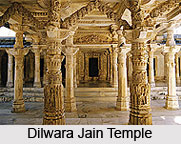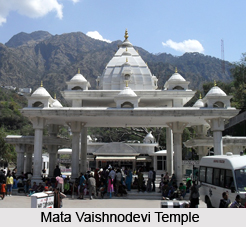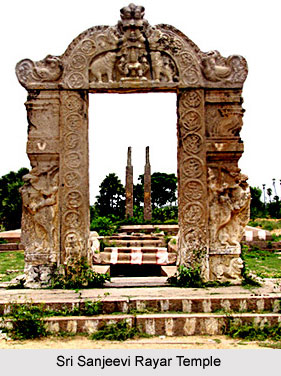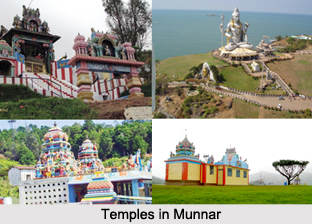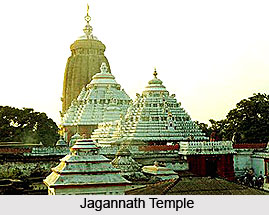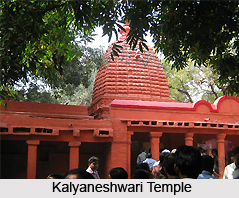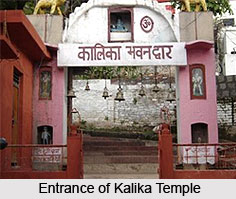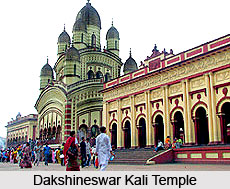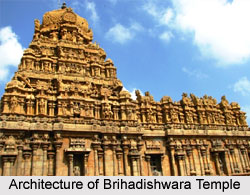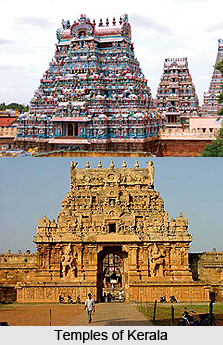 Temples of Kerala form an amazing component to render the state a unique look with the celebrations of various festivals, rituals, customs, traditions etc. Some of the Keralite
Temples are linked to the famous epics of the Mahabharata and the Ramayana. Temples can be called by other names like "Mandir", "Kovil", "Ambalam", "Mandira", "Koil", "Devalayam" and "Kshethram" depending on the local languages which they speak. There is a belief that a temple should offer quiet, calm and neat environment so that the devotees can enjoy a peace of mind. There are also rules and regulations which are formed by the trustee or board or by default that should be conditioned by the devotees visiting the temple. A majority of the temples permit only Hindus to visit the temple premises. There are also exceptions, wherein one can find no caste bar in temples.
Temples of Kerala form an amazing component to render the state a unique look with the celebrations of various festivals, rituals, customs, traditions etc. Some of the Keralite
Temples are linked to the famous epics of the Mahabharata and the Ramayana. Temples can be called by other names like "Mandir", "Kovil", "Ambalam", "Mandira", "Koil", "Devalayam" and "Kshethram" depending on the local languages which they speak. There is a belief that a temple should offer quiet, calm and neat environment so that the devotees can enjoy a peace of mind. There are also rules and regulations which are formed by the trustee or board or by default that should be conditioned by the devotees visiting the temple. A majority of the temples permit only Hindus to visit the temple premises. There are also exceptions, wherein one can find no caste bar in temples.
The temples of Kerala are devoted to a number of gods and goddesses belonging to the Hindu mythology. Few of the major Kerala temples are "Vadakkunnathan Temple", "Ananthapura Lake Temple", "Chottanikkara Temple", "Vaikom Temple", "Mannarshala Temple" and the "Ambalapuzha Temple".
History of Temples of Kerala
The temple architecture in Kerala had its beginning in the early part of the 9th century in the age of Kulasekaras. This is attributed to the political revival of the Chera Dynasty which was accompanied by a religious upheaval giving birth to temples built more or less in permanent material. The earlier Cheras too are said to have extended their patronage to the worship of Lord Vishnu, Skanda or Subrahmanya and Kot-tavai or Goddess Durga indicating the existence of shrines in their times though there is no evidence as to their structural forms.
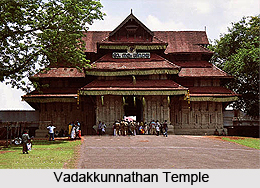 The earlier Kerala temples were largely for Lord Vishnu and Lord Shiva or their different manifestations like Parasurama, Lord Rama, Lord Krishna or Vamana. Shiva is prayed in the form of "Lingam". Swayampradhana shrines to Kartikeya and Lord Ganesha belongs to the later origin, and is visible in temples located in close proximity to Karnataka and Tamil Nadu. The temple inscriptions belong to the ancient Vattezhuttu script of Tamil Nadu. Inscriptions in Malayalam language in the temples are found from the 16th Century. Before the rise of structural temples in different parts of Kerala there were only cave temples and rock-cut caves at "Vizhinjam", "Kottakkal" and "Kaviyur".
The earlier Kerala temples were largely for Lord Vishnu and Lord Shiva or their different manifestations like Parasurama, Lord Rama, Lord Krishna or Vamana. Shiva is prayed in the form of "Lingam". Swayampradhana shrines to Kartikeya and Lord Ganesha belongs to the later origin, and is visible in temples located in close proximity to Karnataka and Tamil Nadu. The temple inscriptions belong to the ancient Vattezhuttu script of Tamil Nadu. Inscriptions in Malayalam language in the temples are found from the 16th Century. Before the rise of structural temples in different parts of Kerala there were only cave temples and rock-cut caves at "Vizhinjam", "Kottakkal" and "Kaviyur".
Architecture of Temples of Kerala
Kerala temple architecture is quite different from the temples of other regions in India. Mainly dictated by the region`s geography which abounds in forests having the bounties of the monsoons, the Kerala temple structure is distinctive. It is considered that each temple in the state is erected in a form to represent the human body. The temples thus refer to all facets of a human body. The temples are among the architectural delights which are carved in the style of tradition. The roofs are pointed and steep, and enveloped with copper sheets. With a plan of circular nature, one can get to see a conical roof, while in a square plan the pyramidal shape of the roof is visible. The temple roof in Kerala is made of wood and the same is completely covered by copper plates. A majority of the Kerala temples have undergone numerous stages of renovation, due to the spoilable nature of materials used of construction. The spiritual centres - the great temples of Suchindram and Trivandrum - were and still are architectural monuments in the southern Tamil style, with massively ornate gopurams or gate towers and complexes of stone buildings, quite unlike the more modest wooden buildings of the authentic Keralian temples.
There are 2 types of temple in Kerala, the rare stone temples in the "Dravidian Style", mainly in southern Travancore, and the wooden temples in the ancient and indigenous "Keralian Style". These forms of architecture differ in much more than choice of building materials. The Dravidian temples of Suchindram and Trivandrum are notable landmarks. Their structures are characterized by the enormous pylon-like gate towers called "Gopurams", heavily decorated with stone and gilded finials, which tower over all the other buildings in the temple complex and can be seen, like the spire of a cathedral, from a great distance.
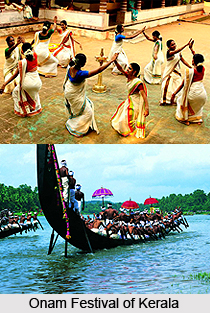 Within the high stone walls of these Dravidian temples there are veritable towns of halls and shrines, united by elaborate processional corridors. Even outside the main enclosures there are highly decorated dancing halls and other buildings, like the beautiful pavilion which stands for all passers to see in the middle of the great tank beside the temple at Suchindram.
Within the high stone walls of these Dravidian temples there are veritable towns of halls and shrines, united by elaborate processional corridors. Even outside the main enclosures there are highly decorated dancing halls and other buildings, like the beautiful pavilion which stands for all passers to see in the middle of the great tank beside the temple at Suchindram.
Rituals at Temples of Kerala
In Kerala, there can be witnessed several rituals and customs relating to the temples. Each of the state"s temples possesses a single presiding deity but there are also more than one deity in some temples. There are also sub-deities or upa-devatas which are fixed outside the sanctum sanctorum or "Sree Kovil". Poojas are carried on as per tantric rules and it is based on the type of temple and its customs and rituals. The eventual authority for performing a tantric Pooja in a temple is known as "Thanthri". Thanthri is regarded as `Father of the Deity`. The timings of offerings and Poojas are different in different temples with regard to the ritual, tradition and specialties. There are some temples in Kerala which organize annual events or festivals, thus giving more importance to the temple. There are also some Kerala temples which open a certain period of time.
Festivals of Kerala Temples
Of the temple festivals, 2 ancient ones deserve special mention for their historical importance, though they are extinct now. These are the "Maha Magha" festival conducted at Tirunavay on the banks of the Bharathappuzha near Thirur and the "Onam" festival of Trikkakara, near Ernakulam.












